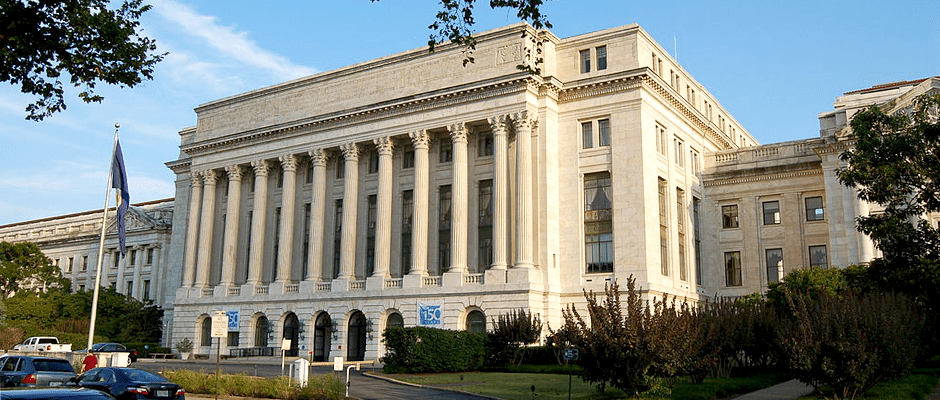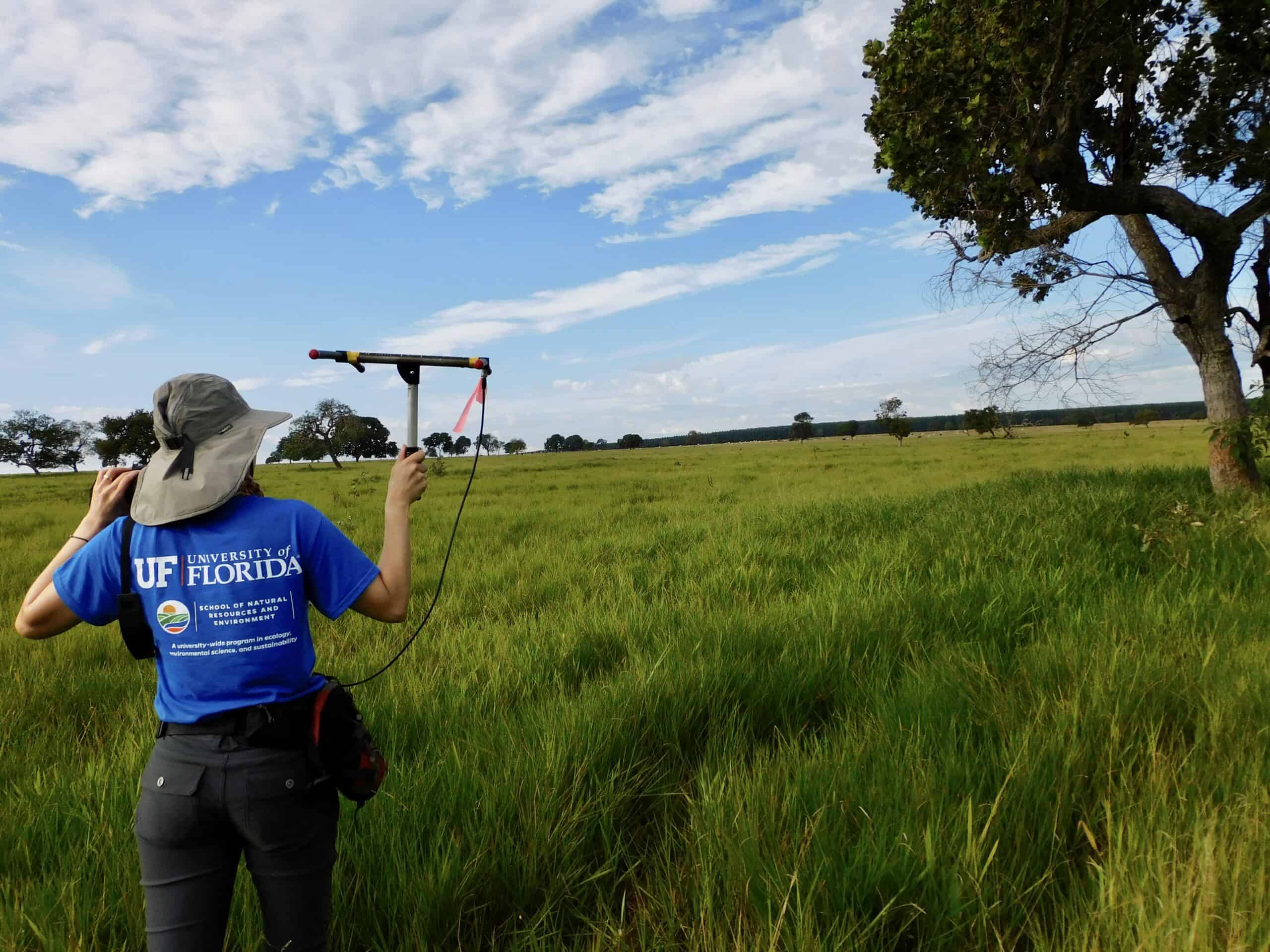Share this article
Wildlife programs see cuts in USDA budget proposal
President Trump’s proposed budget for 2019 cuts funding for the U.S. Department of Agriculture, including deep cuts in several wildlife programs. The Forest Service is slated for reductions of up to $1 billion and APHIS Wildlife Services could see its budget nearly cut in half. The Natural Resources Conservation Service’s discretionary budget may also be reduced.
The cuts are part of the executive budget proposal for fiscal year 2019 (FY19), which Trump released on Feb. 12. This is the first step of the federal budgeting process for FY19. Congress is still finalizing FY18 Appropriations, so the government is currently operating at 2017 enacted levels.
The presidential FY19 budget requests $19 billion in discretionary funding for the USDA, $3.7 billion less than enacted FY17 levels, representing a 16 percent decrease. The USDA budget summary conflicts with this statement, estimating a larger reduction of $4.7 billion, down to $18 billion, for discretionary funding. Mandatory spending for USDA programs is slated to increase by $1.7 billion, based on FY18 estimates, to $122 billion.
The budget affects several USDA wildlife management and conservation programs housed in the Natural Resources Conservation Service, APHIS Wildlife Services and the U.S. Forest Service.
The budget requests a reorganization of the department to “improve the customer and consumer experience.” This includes a merger of the Farm Service Agency, Risk Management Agency and the Natural Resources Conservation Service under a new undersecretary for farm production and conservation. However, each of these agencies are still appropriated funding under their current organization.
| FY17 Actual | FY19 Executive Request | |
US Forest Service |
||
| Forest and Rangeland Research | 308 M | 261 M |
| State and Private Forestry | 322 M | 182 M |
| National Forest System | 1903 M | 1720 M |
| Wildland Fire Activities | 2,331 M | 2,505 M |
| Land Acquisition accounts | 55 M | 1 M |
| Capital Improvement and Maintenance | 364 M | 95 M |
| USFS Total | 6,076 M | 5,071 M |
Natural Resources Conservation Service |
||
| Discretionary Funds: | ||
| Private Lands Conservation Operations | 864 M | 669 M |
| Emergency Watershed Protection Program | 103 M | eliminated |
| Small Watersheds P.L. 83-466 | 150M | eliminated |
| Total, Discretionary Programs | 1,133 M | 669 M |
| Farm Bill Programs (mandatory): | ||
| Environmental Quality Incentives Program | 1,551 M | 1,614 M |
| Agricultural Conservation Easement Program | 466 M | 250 M |
| Conservation Stewardship Program | 1,149 M | 1,645 M |
| Conservation Reserve Program Tech. Assist | 112 M | 95 M |
| Total, Mandatory Programs | 3,387 M | 3,707 |
| NRCS Total | 4,520 M | 4,336 M |
APHIS Wildlife Services |
||
| Wildlife Damage Management | 103 M | 46 M |
| Wildlife Services Methods Development | 19 M | 19 M |
| Wildlife Services Total | 122 M | 65 M |
USDA Total |
137 B | 139 B |
The NRCS implements numerous land management programs and conservation initiatives through its charter of “Helping People Help the Land.” Many see cuts in the proposed budget. Overall, the NRCS could see a net reduction of over $200 million, including cuts to Private Lands Conservation Operations funds used to aid management planning and conservation efforts on private lands.
President Trump’s budget requests an additional $311 million for the Conservation Stewardship Program under the 2018 Farm Bill. This program is rooted in sustainable production and assists landowners and managers in improving working lands. There are currently over 70 million acres of private land enrolled in this program.
The Animal and Plant Health Inspection Service (APHIS) Wildlife Services program faces a proposed $57 million cut, mostly from the Wildlife Damage Management program. Mitigating wildlife damage is critical for the proper management of wildlife, which may be inhibited by the under-funding of this account. The Wildlife Society has advocated on behalf of this program in the past.
The proposed FY19 budget would decrease USFS appropriations by almost $1 billion. Several significant cuts are proposed, including $54 million in cuts for the Land Acquisition accounts, $267 to Capital Improvement and Management and $138 million to State and Private Forestry.
USFS’ Forest and Rangeland Research program, which houses the national Wildlife Research program, also sees a $45 million cut. Discretionary grants from this program are allocated to universities and research institutions to improve federal lands management.
According to the FY19 budget summary, “R&D funding will be prioritized for activities that have the highest impact in meeting agency goals and objectives, including forest restoration, insect and disease management, wildland fire, and water quality and quantity.” The Wildlife Society, along with the Society of American Foresters, led an effort last year to encourage increased funding for the USFS’ Research and Development program, beyond the popular Forest Inventory and Analysis program.
Wildland fire activities continue to be a priority in the federal budget. If approved, fire activities will see an increase of $190 million, with the majority of those funds being allocated to “preparedness.” Increasing wildland fire funding should help reduce “fire borrowing,” the reallocation of discretionary funds to fight forest fires as needed. Congress has attempted to address this issue before by proposing legislation to create an emergency funding source during wildfire events. The Wildfire Disaster Funding Act has most recently been referred to the Subcommittee on Conservation and Forestry
Congress will consider the President’s request as they create 12 appropriations bills. The most significant legislative package for the USDA will be the Agricultural Adjustment Act (Farm Bill), currently being developed by the House Agriculture Committee.
For more information on the federal budget process and how you can get involved, refer to the Policy Toolkit, provided by The Wildlife Society in support of the Conservation Affairs Network.
Header Image: ©Michael Kranewitter








